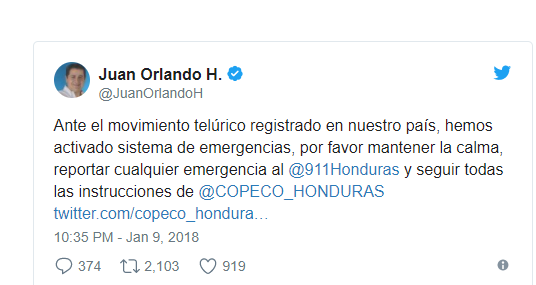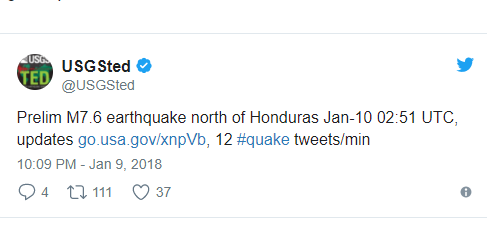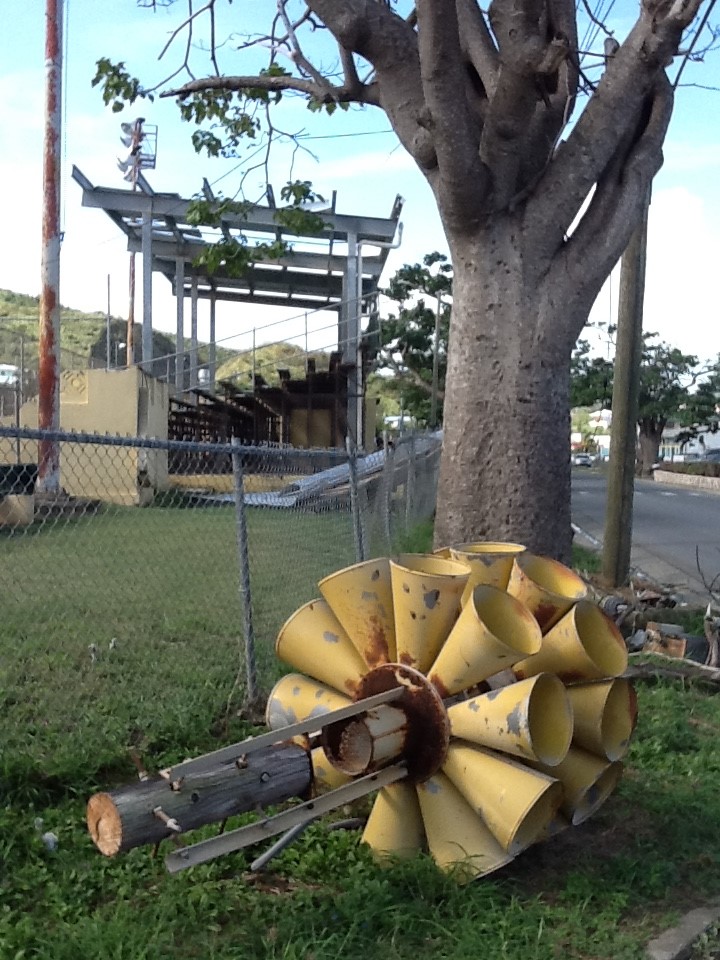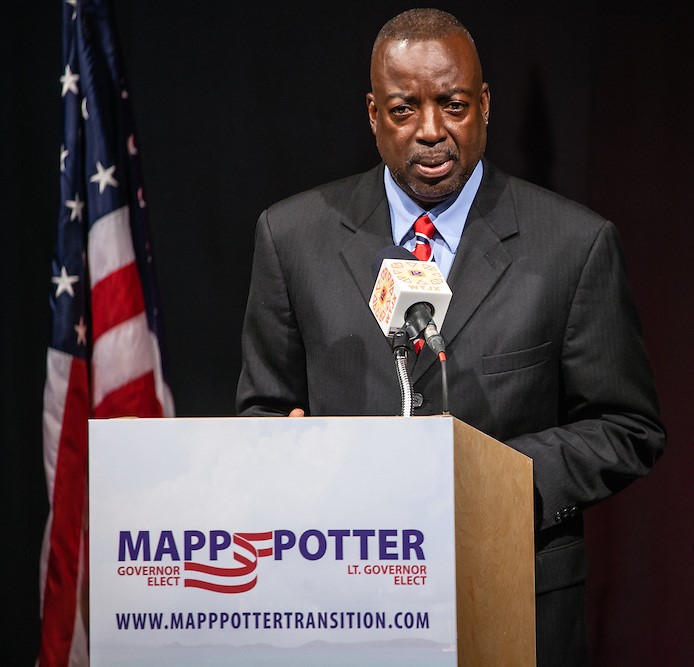TEGUCIGALPA — A 7.6 magnitude earthquake struck the Caribbean region between the coast of Honduras and the Cayman Islands on Tuesday night and the Virgin Islands government caused widespread panic when the Lieutenant Governor held a press conference the next day and told people to go to higher ground.
There were no early reports of damage on land following one of the strongest quakes to hit the region in modern times.
Acting Gov. Osbert Potter unnecessary public panic on St. Thomas when he called a press conference at 11 a.m. on Wednesday and urged all residents to seek higher ground, despite the fact that geological authorities had called off the tsunami warning several hours before.
The result was a massive traffic jam on Mountain Top, St. Thomas, forcing police to ask for help the relieve the traffic flow problems there.
The U.S. Geological Survey said the quake, initially reported as a magnitude 7.8, was centered 125 miles (202 km) northeast of Barra Patuca in Honduras and 191 miles (307 km) southwest of George Town in the Cayman Islands.
The quake was very shallow, at only 6.2 miles (10 km), which would have amplified its effect.
A tsunami advisory was in effect for the Virgin Islands and Puerto Rico after the quake, according to the Pacific Tsunami Warning Center, but subsequent model forecasts indicated no tsunami threat to those areas.
Hazardous tsunami waves were originally deemed “possible” for coasts of Jamaica, Mexico, Honduras, Cuba, Belize, Costa Rica, Panama, Nicaragua, Guatemala and more — but U.S. authorities subsequently concluded there was no such threat to the region.
Honduran President Juan Orlando Hernandez said via Twitter in Spanish that Honduras had activated its emergency system and asked people to remain calm.
It was also lightly felt in the Mexican state of Quintana Roo north of Honduras, according to Mexico’s civil protection director.
The tremors were felt in Belize’s capital, Belize City, but there were no immediate reports of damage.
Belize’s minister in charge of emergency management, Edmond Castro, spoke on local radio to urge people living in low lying coastal areas and islands to stay alert for potentially dangerous waves.
In the Cayman Islands, Sgt. Dave McKay with Royal Cayman Islands Police said that hazard management officials had not issued a tsunami alert, but authorities were monitoring the situation.
Tsunami warning centers said no tsunami waves had been confirmed but stressed that people in Puerto Rico, other Caribbean islands and the coast of Central America should be alert to the danger of possible tsunamis.
No tsunami was expected along the U.S. Gulf and East Coasts, AccuWeather.com reported.
The U.S. Geological Survey said the temblor struck in the sea about 125 miles north-northeast of Barra Patuca, Honduras, close to 200 miles southwest of George Town, Cayman Islands, and occurred about 6 miles below the surface.
Nonetheless, hazardous tsunami waves were still possible within 621 miles of the quake’s epicenter, AccuWeather.com reported, citing the National Tsunami Warning Center (NTWC).
In fact, tsunami waves of up to 1 foot were possible for Puerto Rico and the U.S. Virgin Islands.
People near the coast were advised to immediately seek higher ground, the weather network reported.
Tuesday’s earthquake came almost exactly eight years after a 7.0 magnitude quake that devastated Haiti on Jan. 12, 2010, the report said.
http://edition.cnn.com/2018/01/09/americas/earthquake-honduras-tsunami/index.html
DOWN AND OUT: One of the 32 tsunami warning sirens territory-wide that is disconnected and not working. This one rests on the ground outside the fence at D.C. Canegata Ballpark in Estate Welcome, St. Croix. The Virgin Islands Territorial Emergency Management Agency (VITEMA) run by Mona Barnes has not announced plans to fix any of them to date.
BONEHEAD MOVE: Lt. Gov. Osbert Potter put his foot in his mouth when he told Virgin Islanders to seek higher ground several hours after the threat of a tsunami had passed following the powerful earthquake near Honduras.






